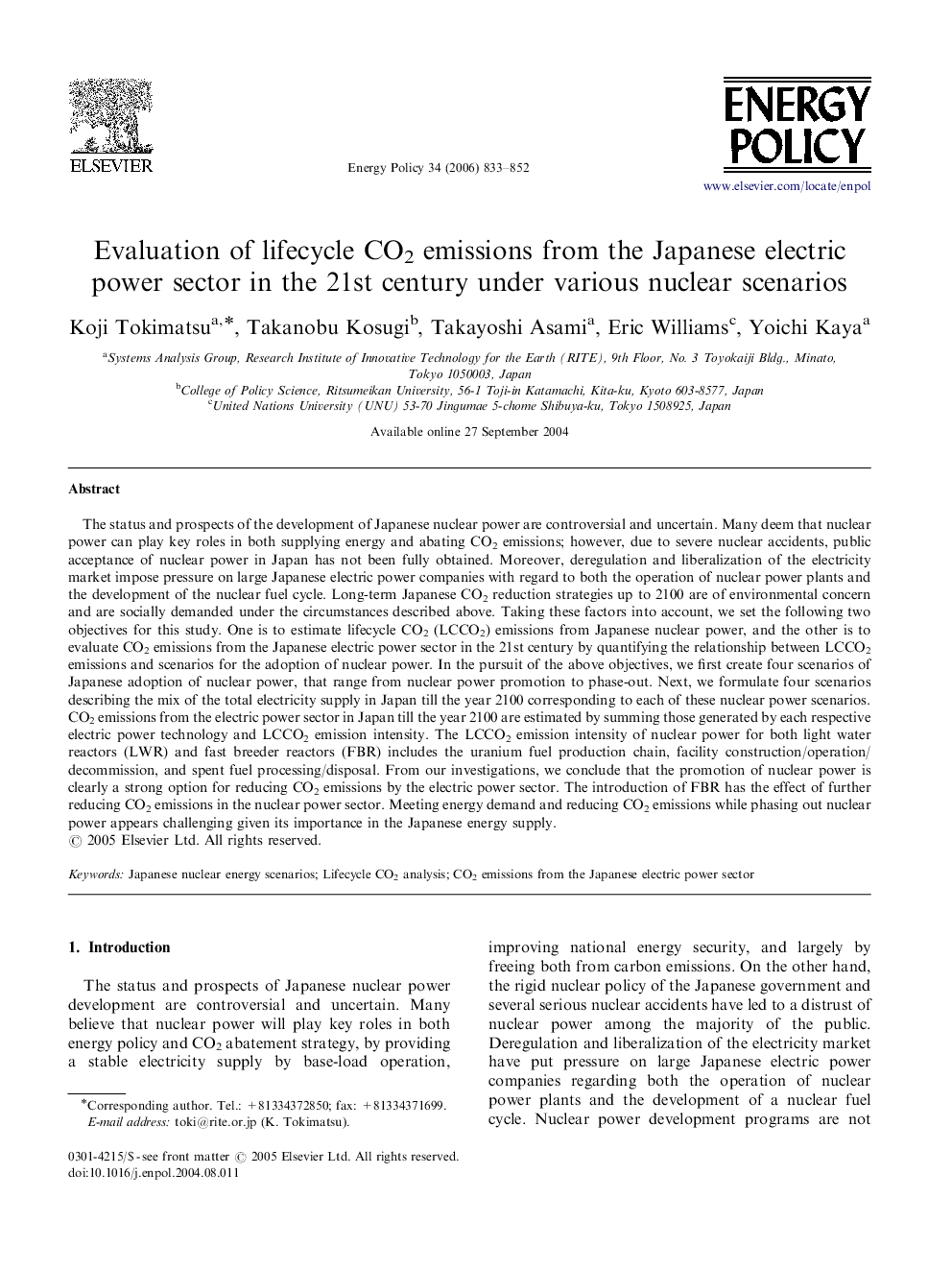| کد مقاله | کد نشریه | سال انتشار | مقاله انگلیسی | نسخه تمام متن |
|---|---|---|---|---|
| 995423 | 936197 | 2006 | 20 صفحه PDF | دانلود رایگان |

The status and prospects of the development of Japanese nuclear power are controversial and uncertain. Many deem that nuclear power can play key roles in both supplying energy and abating CO2 emissions; however, due to severe nuclear accidents, public acceptance of nuclear power in Japan has not been fully obtained. Moreover, deregulation and liberalization of the electricity market impose pressure on large Japanese electric power companies with regard to both the operation of nuclear power plants and the development of the nuclear fuel cycle. Long-term Japanese CO2 reduction strategies up to 2100 are of environmental concern and are socially demanded under the circumstances described above. Taking these factors into account, we set the following two objectives for this study. One is to estimate lifecycle CO2 (LCCO2) emissions from Japanese nuclear power, and the other is to evaluate CO2 emissions from the Japanese electric power sector in the 21st century by quantifying the relationship between LCCO2 emissions and scenarios for the adoption of nuclear power. In the pursuit of the above objectives, we first create four scenarios of Japanese adoption of nuclear power, that range from nuclear power promotion to phase-out. Next, we formulate four scenarios describing the mix of the total electricity supply in Japan till the year 2100 corresponding to each of these nuclear power scenarios. CO2 emissions from the electric power sector in Japan till the year 2100 are estimated by summing those generated by each respective electric power technology and LCCO2 emission intensity. The LCCO2 emission intensity of nuclear power for both light water reactors (LWR) and fast breeder reactors (FBR) includes the uranium fuel production chain, facility construction/operation/decommission, and spent fuel processing/disposal. From our investigations, we conclude that the promotion of nuclear power is clearly a strong option for reducing CO2 emissions by the electric power sector. The introduction of FBR has the effect of further reducing CO2 emissions in the nuclear power sector. Meeting energy demand and reducing CO2 emissions while phasing out nuclear power appears challenging given its importance in the Japanese energy supply.
Journal: Energy Policy - Volume 34, Issue 7, May 2006, Pages 833–852